- Clone
- MPC-11 (See other available formats)
- Regulatory Status
- RUO
- Isotype
- Mouse IgG2b, κ
- Ave. Rating
- Submit a Review
- Product Citations
- publications
The MPC-11 immunoglobulin has unknown specificity. This antibody was chosen as an isotype control after screening on a variety of resting, activated, live, and fixed mouse, rat and human tissues.
Product DetailsProduct Details
- Antibody Type
- Monoclonal
- Host Species
- Mouse
- Formulation
-
test sizes: Phosphate-buffered solution, pH 7.2, containing 0.09% sodium azide and BSA (origin USA).
µg sizes: Phosphate-buffered solution, pH 7.2, containing 0.09% sodium azide. - Preparation
- The immunoglobulin was purified by affinity chromatography, and conjugated with APC under optimal conditions.
- Concentration
- µg sizes: 0.2 mg/mLtest sizes: lot-specific (to obtain lot-specific concentration and expiration, please enter the lot number in our Certificate of Analysis online tool.)
- Storage & Handling
- The antibody solution should be stored undiluted between 2°C and 8°C, and protected from prolonged exposure to light. Do not freeze.
- Application
-
FC - Quality tested
ICFC - Verified - Recommended Usage
-
Each lot of this mouse IgG2b, ? isotype control antibody is quality control tested by immunofluorescent staining with flow cytometric analysis. For flow cytometric staining, use the isotype control at the same concentration as your primary antibody. Use our Concentration Lookup tool to find the exact concentrations of your lots of product.
- Excitation Laser
-
Red Laser (633 nm)
- Application Notes
-
Additional reported applications (for the relevant formats) include: Intracellular Flow Cytometry (ICFC), Immunocytochemistry (ICC), Immunohistochemistry (IHC), Immunoprecipitation (IP), Western Blotting (WB), Functional Assay (FA).
-
Application References
(PubMed link indicates BioLegend citation) - Product Citations
-
- RRID
-
AB_326500 (BioLegend Cat. No. 400322)
Antigen Details
- Gene ID
- NA
Related Pages & Pathways
Pages
Related FAQs
Other Formats
View All Reagents Request Custom ConjugationCustomers Also Purchased
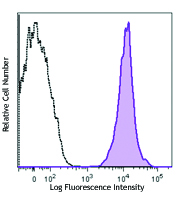
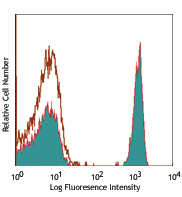
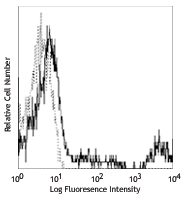
Compare Data Across All Formats
This data display is provided for general comparisons between formats.
Your actual data may vary due to variations in samples, target cells, instruments and their settings, staining conditions, and other factors.
If you need assistance with selecting the best format contact our expert technical support team.
-
APC Mouse IgG2b, κ Isotype Ctrl
-
Biotin Mouse IgG2b, κ Isotype Ctrl
-
FITC Mouse IgG2b, κ Isotype Ctrl
-
PE Mouse IgG2b, κ Isotype Ctrl
-
PE/Cyanine5 Mouse IgG2b, κ Isotype Ctrl
-
Purified Mouse IgG2b, κ Isotype Ctrl

Chromatin Immunoprecipitations (ChIP) were performed with cr... 
Chromatin Immunoprecipitations (ChIP) were performed with cr... -
APC/Cyanine7 Mouse IgG2b, κ Isotype Ctrl
-
PE/Cyanine7 Mouse IgG2b, κ Isotype Ctrl
-
Alexa Fluor® 647 Mouse IgG2b, κ Isotype Ctrl
-
Alexa Fluor® 488 Mouse IgG2b, κ Isotype Ctrl
-
Pacific Blue™ Mouse IgG2b, κ Isotype Ctrl
-
Alexa Fluor® 700 Mouse IgG2b, κ Isotype Ctrl
-
PerCP Mouse IgG2b, κ Isotype Ctrl
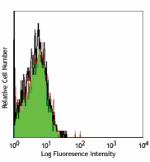
Human peripheral blood lymphocytes stained with MPC-11 PerCP -
PerCP/Cyanine5.5 Mouse IgG2b, κ Isotype Ctrl
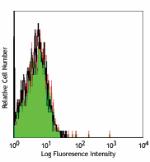
Human peripheral blood lymphocytes stained with MPC-11 PerCP... -
Brilliant Violet 421™ Mouse IgG2b, κ Isotype Ctrl
-
Brilliant Violet 570™ Mouse IgG2b, κ Isotype Ctrl
-
Brilliant Violet 510™ Mouse IgG2b, κ Isotype Ctrl
-
Ultra-LEAF™ Purified Mouse IgG2b, κ Isotype Ctrl
-
Brilliant Violet 605™ Mouse IgG2b, κ Isotype Ctrl
-
Brilliant Violet 650™ Mouse IgG2b, κ Isotype Ctrl
-
Brilliant Violet 711™ Mouse IgG2b, κ Isotype Ctrl
-
Brilliant Violet 785™ Mouse IgG2b, κ Isotype Ctrl
-
PE/Dazzle™ 594 Mouse IgG2b, κ Isotype Ctrl
-
Alexa Fluor® 594 Mouse IgG2b, κ Isotype Ctrl
-
APC/Fire™ 750 Mouse IgG2b, κ Isotype Ctrl
-
GoInVivo™ Purified Mouse IgG2b, κ Isotype Ctrl
-
FITC Mouse IgG2b, κ Isotype Ctrl
-
Pacific Blue™ Mouse IgG2b, κ Isotype Ctrl
-
APC Mouse IgG2b, κ Isotype Ctrl
-
TotalSeq™-A0092 Mouse IgG2b, κ isotype Ctrl
-
PE/Cyanine7 Mouse IgG2b, κ Isotype Ctrl
-
TotalSeq™-B0092 Mouse IgG2b, κ isotype Ctrl
-
TotalSeq™-C0092 Mouse IgG2b, κ isotype Ctrl
-
PerCP/Cyanine5.5 Mouse IgG2b, κ Isotype Ctrl
-
TotalSeq™-D0092 Mouse IgG2b, κ Isotype Ctrl
-
GMP APC Mouse IgG2b, κ Isotype Control
-
GMP FITC Mouse IgG2b, κ Isotype Ctrl
-
GMP Pacific Blue™ Mouse IgG2b, κ Isotype Ctrl
-
GMP PerCP/Cyanine5.5 Mouse IgG2b, κ Isotype Ctrl
-
Brilliant Violet 750™ Mouse IgG2b, κ Isotype Ctrl
-
Spark NIR 685™ Mouse IgG2b, κ Isotype Ctrl
-
PE/Fire™ 810 Mouse IgG2b, κ Isotype Ctrl
-
TotalSeq™-Bn0092 Mouse IgG2b, κ Isotype Ctrl
-
PE/Fire™ 700 Mouse IgG2b, κ Isotype Ctrl
-
KIRAVIA Blue 520™ Mouse IgG2b, κ Isotype Ctrl
-
PE/Fire™ 640 Mouse IgG2b, κ Isotype Ctrl
-
GMP PE/Cyanine7 Mouse IgG2b, κ Isotype Ctrl
-
APC/Fire™ 810 Mouse IgG2b, κ Isotype Ctrl
-
Spark YG™ 570 Mouse IgG2b, κ Isotype Ctrl
-
PerCP/Fire™ 806 Mouse IgG2b, κ Isotype Ctrl
-
Spark Red™ 718 Mouse IgG2b, κ Isotype Ctrl
-
Spark Blue™ 515 Mouse IgG2b, κ Isotype Ctrl
-
PerCP/Fire™ 780 Mouse IgG2b, κ Isotype Ctrl
-
Spark PLUS UV™ 395 Mouse IgG2b, κ Isotype Ctrl
 Login / Register
Login / Register 









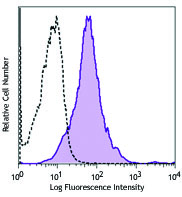



Follow Us